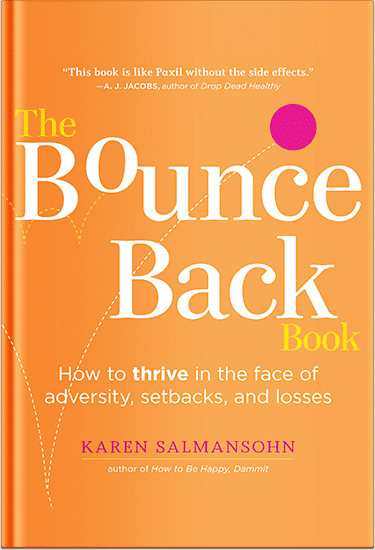 One of the easiest and best methods to keep in shape is to run. However, having the appropriate equipment is essential to improving performance and increasing comfort when running.
One of the easiest and best methods to keep in shape is to run. However, having the appropriate equipment is essential to improving performance and increasing comfort when running.
The proper equipment and supplies may dramatically lower your chance of injury and improve your performance.
For novices running your first 5K or first-time marathoners, having the right gear can make a big impact on your performance.
If you don’t know which gears to invest in, I am going to share eight essential runner gears that every runner must have.
I’m writing this article because I’m a bestselling wellness author. I wrote a bestselling relaxation book called Instant Calm. Plus I founded a nutritionist recommended online program called The Stop Emotional Eating Course.
Essential Runner Gears
I’m committed to helping people to live their healthiest best lives so I put together this guide to the essential runners gear.
1. A Reliable Pair of Running Shoes
A decent pair of running shoes is the foundation of any running equipment configuration. Your running style, stride, and foot type should all be taken into consideration while selecting running shoes. Shoes differ greatly depending on whether you’re running sprints, marathons, or trail runs.
You must go to a specialty store so that experts may examine your gait and stride. This guarantees that the running shoes you select provide the ideal ratio of cushioning, stability, and support for your running style.
2. Energy Gels
Your body requires nourishment to sustain itself during prolonged runs, especially readily absorbed fuel. Since they offer a concentrated source of quick-release carbohydrates — which can be crucial during endurance runs — Energy Gels are a popular option. This helps runners maintain optimal energy levels without causing stomach distress.
3. Technical Apparel
A beginner’s error is to run in shorts and cotton shirts. Synthetic fiber-based technical clothing wicks perspiration off your body to keep you dry and comfortable while you run. Socks, jeans, shorts, and shirts fall under this category.
Compression gear can also improve blood circulation and lessen muscle soreness, which can improve performance and recuperation. Furthermore, layering clothes is essential in colder climates. You can stay warm and protected from the weather with a jacket that is both breathable and insulating. For added support, especially during physical activity, nose strips can help enhance airflow and make breathing easier.
4. Hydration Solutions
It’s important to stay hydrated, particularly on long runs and in hot conditions. Sometimes carrying water seems like a chore, but it’s really easy if you have the correct equipment. Handheld bottles, hydration belts, and even hydration jackets are available for longer distances, such as ultramarathons and marathons.
5. Runner Watch or Fitness Tracker
 You may significantly enhance your training using a running watch or fitness tracker. These gadgets monitor your heart rate, pace, and general progress in addition to using GPS to map your trip.
You may significantly enhance your training using a running watch or fitness tracker. These gadgets monitor your heart rate, pace, and general progress in addition to using GPS to map your trip.
They may give you comprehensive information on each run, making them useful tools for goal-setting and achievement. Over time, this data can assist in improving your training regimen and helping you achieve greater outcomes.
6. Sun Protection
Sunscreen is essential since running outside exposes you to the sun. Sunscreen, a breathable hat, and sunglasses fall under this category. In addition to preventing long-term harm, covering your skin and eyes can enhance your running experience by lowering glare and preventing sunburns.
7. Reflective Gear or Lights
Safety should always come first, particularly if you frequently run in poor visibility early in the morning or late at night. Having reflective clothing or tiny lights on makes sure that cars, cyclists, and other runners can see you. You can incorporate these into your shoes, armbands, or clothes.
8. Recovery Tools
Just as important as the run itself is recovery. By reducing muscle stiffness and tightness, devices like massage guns and foam rollers can hasten the healing process. Experts say that incorporating regular muscle treatment into your regimen will help you retain the flexibility and health of your muscles—two things that runners need.
9. Weather-Appropriate Accessories
Since the weather might change suddenly, it’s critical to always have the appropriate accessories available. These include rain-resistant clothing for overcast days, warm-weather thermal hats and gloves, and even arm sleeves for added sun protection or a little warmth on chilly days.
10. A Good Running Backpack
A decent running backpack is a must for anyone who likes to embark on longer runs or walks to work. It should be small and light, fit snugly to prevent bouncing, and have enough pockets to hold necessities like your phone, additional water, food, and a first aid kit.
Preparing for Your First Marathon
Once you have the proper gear, it’s time to get on your toes and prepare for your first marathon. Here is a comprehensive guide to assist you in getting ready for the big day:
1. Establish Realistic Goals
Decide what your objectives are for the marathon, such as finishing it or reaching a particular time. Regarding your level of fitness right now and the amount of time you have to work out, be realistic.
2. Choose a Training Plan
Pick a marathon training plan based on your schedule and level of fitness. These programs usually span 12 to 20 weeks and build up mileage and intensity progressively to get your body ready for the demands of a marathon.
3. Start Slowly
If you’ve never run before, start with a base-building phase to increase your mileage and develop your endurance bit by bit. To avoid injury and burnout, blend rest days, cross-training, gym days, and running into your weekly routine.
4. Focus on Consistency
Training for a marathon requires consistency. Even on the days when you don’t feel inspired, try your hardest to follow your workout schedule. Never forget that every run, no matter how brief, advances you overall.
5. Listen to Your Body
During exercise, be aware of how your body feels. Don’t disregard pain or discomfort if you feel it. Take breaks, switch up your training, or consult a specialist to keep injuries from getting worse.
6. Nutrition and Hydration
To assist your training and recovery, feed your body wholesome meals. To refuel electrolytes and carbs during lengthy runs, think about including energy gels or sports beverages into your daily hydration regimen.
7. Practice Race-Day Nutrition
During your long training runs, try out various snacks and beverages to see what suits you best on race day. To reduce the chance of gastrointestinal troubles on race day, refrain from attempting anything new.
8. Equipment and Clothing
Invest in top-notch running shoes and clothing that fit properly and are appropriate for the race day weather. During exercise, break in your shoes and clothes to avoid blisters and chafing.
9. Simulate Race Conditions
As the big day draws near, try to incorporate longer training runs that mimic the circumstances of the race, paying attention to nutrition, hydration, and pacing. To develop confidence and mental resilience, practice running at the marathon speed you want to achieve.
10. Taper
To give your body a chance to relax and recuperate, progressively cut back on your mileage and intensity in the last weeks before the marathon. In the days preceding the race, have faith in your preparation and fight the need to overdo it.
Invest in the Essential Running Gears!
Purchasing the appropriate running equipment can completely change your running experience, increasing enjoyment and performance. Every piece of equipment has a function, whether it’s improving performance recuperation or increasing comfort and safety.
It’s worth the effort to assess your equipment and make sure you have the necessities suited to your demands, regardless of experience level. This strategic strategy helps you achieve your long-term fitness and health goals while also making your runs more pleasant.
Get Support to Live Happy And Healthy
Enhance your eating habits by learning strategies to stick to a healthy diet. I recommend my online program: The Stop Emotional Eating Course.
P.S. Before you zip off to your next Internet pit stop, check out these 2 game changers below - that could dramatically upscale your life.
1. Check Out My Book On Enjoying A Well-Lived Life: It’s called "Your To Die For Life: How to Maximize Joy and Minimize Regret Before Your Time Runs Out." Think of it as your life’s manual to cranking up the volume on joy, meaning, and connection. Learn more here.
2. Life Review Therapy - What if you could get a clear picture of where you are versus where you want to be, and find out exactly why you’re not there yet? That’s what Life Review Therapy is all about.. If you’re serious about transforming your life, let’s talk. Learn more HERE.
Think happier. Think calmer.
Think about subscribing for free weekly tools here.
No SPAM, ever! Read the Privacy Policy for more information.
One last step!
Please go to your inbox and click the confirmation link we just emailed you so you can start to get your free weekly NotSalmon Happiness Tools! Plus, you’ll immediately receive a chunklette of Karen’s bestselling Bounce Back Book!


 One of the easiest and best methods to keep in shape is to run. However, having the appropriate equipment is essential to improving performance and increasing comfort when running.
One of the easiest and best methods to keep in shape is to run. However, having the appropriate equipment is essential to improving performance and increasing comfort when running. You may significantly enhance your training using a running watch or fitness tracker. These gadgets monitor your heart rate, pace, and general progress in addition to using GPS to map your trip.
You may significantly enhance your training using a running watch or fitness tracker. These gadgets monitor your heart rate, pace, and general progress in addition to using GPS to map your trip.